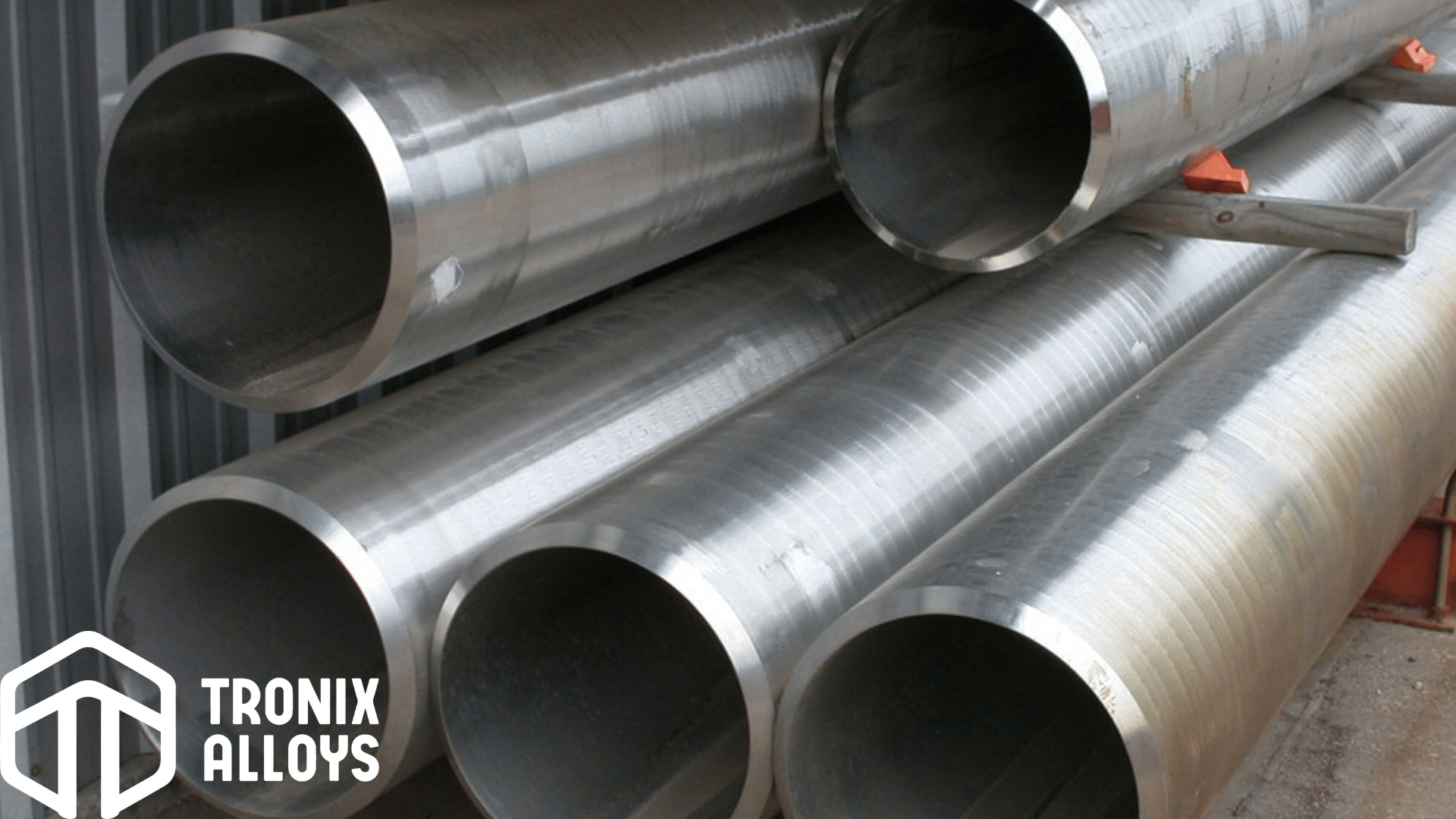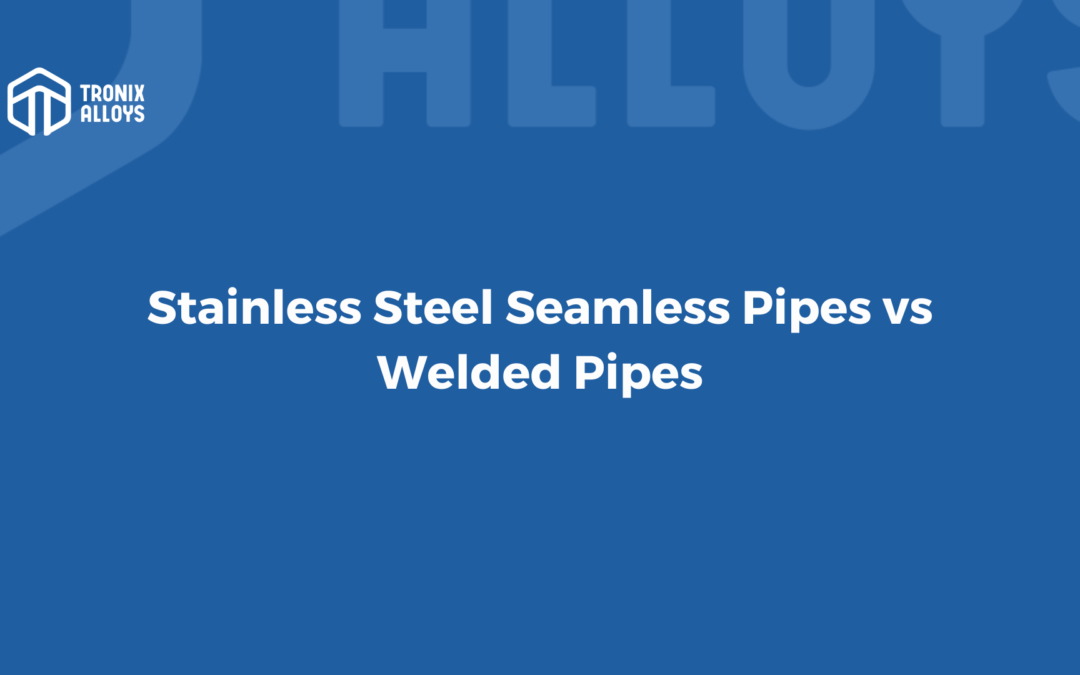In the manufacturing and fabrication industry, stainless steel tubing is one of the most versatile metal alloy materials available. It is important to note that there are two types of tubing that are commonly used: seamless and welded. The decision as to whether welded tubing should be used or seamless tubing should be used mainly depends on the application requirements of the product. Keep in mind that in order to choose between the two, you should keep in mind that firstly, the tubing must meet the specifications of the project. Secondly, the tubing must be able to withstand the conditions in which the tubing is ultimately going to be used.
Tubing vs Piping
In spite of the fact that the words tube and pipe are often used interchangeably, largely due to the fact that both are hollow-shaped, there are a number of important differences between the two when determining whether welded tubing is preferable to seamless tubing. As a general rule, tubes are measured by the outside diameter (OD) and the thickness of the wall. Pipes, on the other hand, are measured by their inside diameter (ID) rather than their outside diameter (OD). The purpose of tubing is usually to provide structural and aesthetic reinforcement of a structure, whereas the purpose of piping is to transport fluids, liquids, and gases within a space.
Seamless Tubing Manufacturing
It is the first step in the making of seamless tubing that a seamless pipe is formed, which is called a hollow/mother tube in the industry. After being formed from solid round stock, the billet is first drilled through with a drill bit, then it is heated, then it is forced through a narrow die. As the hollow tube is formed, a rod known as a mandrel is used to support its center during the process of forming it. It is then put through a Pilger mill so that the mother tube can be cleaned. During the operation of this machine, the tube is elongated and reduced to the required size by using a pair of rolling dies and a second mandrel.
As a result of this process, it is possible to reduce the cross-section of the tube by as much as 90% in a single step. It is important to note that pilfering is not recommended for tubing with smaller diameters.
There is no better option than drawing for small-diameter tubing. A crimping die is used to create a crimp on one end of the mother tube that will allow it to be grasped, after which it is pushed through a narrowing die. It is through this process that the tube is narrowed and elongated.
As a result of this process, it may be necessary to repeat it several times in order to achieve the size reduction you desire.
In contrast to welded tubing, seamless tubing can handle higher pressures due to the fact that it does not have the large stress concentration point that welded tubing does. It is also important to keep in mind that seamless tubing often has a cleaner surface finish, so it is less susceptible to corrosion or pitting. It is important to note, however, that seamless tubing manufacturing involves a great number of additional steps. This is one of the reasons why seamless takes a lot more time to produce and can sometimes be more expensive than its welded counterpart as a result.
Having an understanding of that distinction can also assist in determining which tubing is best suited to a particular use, either welded or seamless, for a particular purpose. It is evident from the very name of the products that the manufacturing process for both welded and seamless tubing is a different one. The seamless tubes are defined by the fact that there is no seam on them – they are completely seamless. Stainless steel tubing is manufactured by extrusion, a process in which a solid billet of stainless steel is drawn from a solid billet and extruded into a hollow tube. As soon as the billets are heated, they are shaped into oblong circular molds that are hollowed in a piercing mill after they have been heated. A mandrel rod is used to extend the mold while it is still hot by drawing the mold through it. A seamless tube is created by the mandrel milling process which increases the length of the mold by twenty times in order for the tube to be formed. The next step in the process of shaping tubing would be pilfering, a cold rolling process, or a cold drawing process.

Welded Tubing Manufacturing
As the name implies, weldable tubing is produced by rolling strips of stainless steel into a tube, and then welding the tube along its entire length. In order to refine the weld seam or bead, cold rolling and forging of the weld seam or bead can be used or the weld seam itself can be left unrefined.
As a result of cold forming, the surfaces are smoother and the tolerances are tighter. You can even draw seamless tubing like welded tubing, which can give you a good weld seam, as well as a more aesthetically pleasing surface finish. On larger diameter tubes, welded tubing can also be produced with thinner walls compared to seamless tubing, which allows it to be produced with thinner walls. It is typically quicker and cheaper to produce welded tubing than seamless tubing due to the fact that welded tubing requires less processing and has a lower cost as well.
In terms of the downside of welded tubing, there is the possibility of high pressures and heavy walls in the application. Having a long seam for welding causes the tubing to be stressed more in a concentrated area, which reduces the pressure ratings by 80% compared to seamless tubing. It is also important to make sure that the stainless steel material used to create welded tubing is thin enough to roll effectively as well. As a result, heavy wall tubing has less feasibility as-welded tubing due to its thick wall.
The process of producing a welded stainless steel tube consists of rolling strips or sheets of stainless steel into a tube shape and then welding the seam along the length of the tube. It is possible to form welded tubing using either hot or cold forming processes in order to achieve the desired result. It has been shown that cold forming results in smoother finishes and tighter tolerances compared to hot forming. It is important to note that regardless of how a steel tube is created, it will always be durable, strong, and corrosion-resistant. In order to further work on the seam after it has been beaded, cold rolling or forging methods can be applied in addition to beading. There is also an option of drawing the welded tube similarly to seamless tubing in order to produce a finer weld seam with better surface finishes as well as tighter tolerances.
Seamless Tubing
By definition, seamless tubes are completely homogeneous tubes, a quality that gives seamless tubes greater strength, superior corrosion resistance, and the capability of withstanding higher pressures than welded tubes due to their properties. They are therefore better suited for applications in harsh environments, such as those in critical situations, but they come at a price for this.
Benefits
- Stronger
- Superior corrosion resistance
- Higher pressure resistance
Applications
- Oil and gas control lines
- Chemical injection lines
- Below sea safety valves
- Chemical processing plant steam and heat trace bundles
- Fluid and gas transfer
Welded Tubing
Generally speaking, welded tubing is less expensive than seamless tubing due to the easier manufacturing process involved in making welded tubing. Moreover, it is also readily available, just like seamless tubing, in continuous lengths over a long period of time. There are a number of standard sizes that can be produced with similar lead times for both seamless and welded tubing. In the case of smaller manufacturing runs, where there is less quantity required, the costs associated with seamless tubing can be offset. In other words, it may be easier and more convenient to produce custom-sized seamless tubing for a given application, but it will also be more expensive.
Benefits
- Cost-efficient
- Readily available in long lengths
- Fast lead times
Applications
- Architectural applications
- Hypodermic needles
- Automotive industry
- Food and beverage industry
- Marine industry
- Pharmaceutical industry
Costs of Welded vs Seamless
The costs of seamless tubing and welded tubing are also affected by such factors as the strength and durability of the tubing. In addition to its easier manufacturing process, welded tubing can be produced with larger diameters and thinner wall thicknesses at a lower cost. The production of such properties is more difficult in seamless tubing because the process is more complicated. Meanwhile, seamless tubing is more efficient when it comes to constructing heavy walls, such as the construction of high walls. If the application requires or is capable of enduring high pressure or is required to perform in extreme conditions, seamless tubing is often preferred over heavy wall tubing.
A number of factors are combined to make stainless steel tubing one of the best choices for structural applications in a variety of industries ranging from automotive and aerospace to medical and marine. Whether you are unsure of which tube is best for your application, as a point of reference, though seamless tubing can be substituted for welded tubing, welded tubing can never be substituted for seamless tubing, if that is what you are looking for.


Seamless steel pipe has a higher strength and pressure capacity than ERW welded steel pipe. In the high pressure equipment and boiler industries, it is widely used.
A welded tube is generally less expensive than a seamless tube due to the fact that the manufacturing process for welding tubing is simpler than that of creating a seamless tube.
It is then put through a Pilger mill so that the mother tube can be cleaned.
As a general rule, tubes are measured by the outside diameter (OD) and the thickness of the wall.